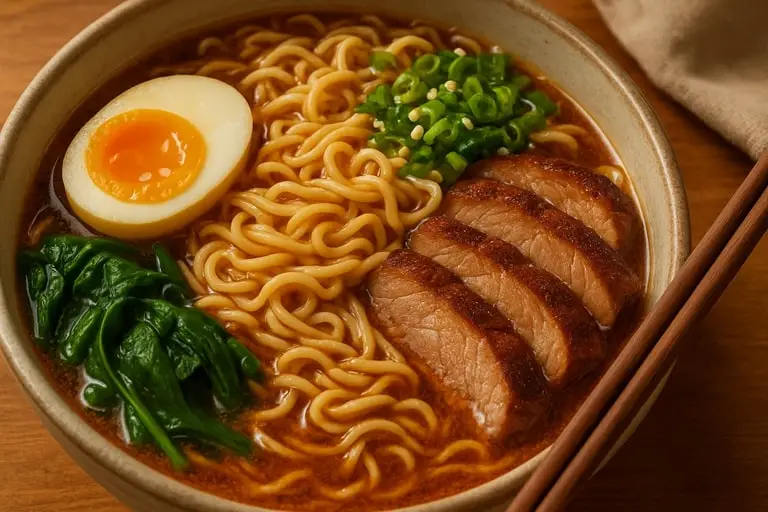Sneezing is a natural reflex designed to expel irritants from the nasal passages, but when it becomes constant, disruptive, or prolonged, it creates challenges that affect health, comfort, and daily life. Understanding how to stop sneezing effectively requires careful attention to the biological process, the root causes, and the range of solutions that balance medical treatment with everyday preventive measures. Unlike a simple inconvenience, repetitive sneezing can signal deeper health issues such as allergies, chronic rhinitis, or infection, which means that knowledge and action must go beyond quick fixes. Recognizing this distinction is the foundation for exploring both medical and natural strategies for lasting relief.
One of the most common causes of repetitive sneezing is allergy. Allergens such as pollen, animal dander, mold spores, and dust mites trigger an immune system reaction, releasing histamine and inflaming the nasal lining. This response prompts sneezing as the body attempts to clear the irritants. For individuals with seasonal allergies, the challenge is recurrent, peaking during spring or autumn. To stop sneezing in such cases, antihistamines and nasal corticosteroids provide immediate help, while lifestyle changes such as using air filters, cleaning fabrics frequently, and avoiding outdoor exposure during high pollen days offer preventive benefits. This illustrates that learning how to stop sneezing is a long-term process requiring both environmental management and medical oversight.
Infections represent another major factor. The common cold and flu inflame nasal passages, producing sneezing along with congestion, fatigue, and cough. Unlike allergies, these sneezing episodes usually subside as the infection resolves, but supportive care accelerates recovery. Hydration, steam inhalation, saline sprays, and rest strengthen the body’s natural defenses, minimizing irritation. The role of sneezing here is partly protective, helping clear pathogens, yet for patients seeking relief, reducing triggers and maintaining nasal hygiene is essential. While medications like decongestants offer temporary improvement, they should be used cautiously, since overuse can worsen congestion in the long run. This reinforces that sustainable control of sneezing requires a thoughtful, balanced approach.
Environmental irritants amplify the problem. Cigarette smoke, heavy pollution, chemical fumes, and even strong fragrances overstimulate the nasal lining. For workers exposed to dust or industrial chemicals, sneezing may become constant, lowering productivity and affecting respiratory health. Preventive strategies such as workplace ventilation, protective masks, and stricter exposure control prove as valuable as medications. Addressing environmental triggers goes beyond personal comfort; it protects long-term respiratory well-being. In these scenarios, stopping sneezing means altering conditions rather than only soothing symptoms.
Certain individuals experience sneezing due to reflexes rather than disease. The photic sneeze reflex, triggered by sudden exposure to bright light, and cold-air sneezing when stepping outdoors in winter are examples of this phenomenon. While harmless, these reactions can be inconvenient. Practical strategies such as wearing sunglasses or covering the nose during temperature transitions minimize episodes. Though not considered dangerous, reflex sneezing demonstrates how broad the spectrum of sneezing causes can be, reminding us that knowing how to stop sneezing requires understanding both medical and non-medical influences.
Persistent sneezing can also reveal structural or chronic conditions within the nasal passages. Nonallergic rhinitis, deviated septum, and nasal polyps interfere with airflow, creating constant irritation. Unlike seasonal sneezing, these conditions require medical evaluation, with treatment options ranging from prescription sprays to surgical correction. Ignoring such causes risks long-term discomfort and complications. Here, the effort to stop sneezing becomes a medical necessity rather than a matter of comfort. Seeking timely consultation with an otolaryngologist ensures the right diagnosis and tailored care.
For children, the issue requires special attention. Sneezing in children often stems from infections, allergies, or irritants, but in some cases foreign objects in the nasal passages may be the cause. Parents must approach sneezing carefully, avoiding strong medications without medical advice. Gentle remedies such as saline drops, humidifiers, and allergen reduction often prove sufficient. Pediatric evaluation ensures that more serious underlying conditions are not missed. This balance between safety and effectiveness shows why stopping sneezing in children demands both attentiveness and caution.
Sneezing also carries psychological and social impacts. In workplaces, classrooms, or social gatherings, persistent sneezing draws unwanted attention, embarrassment, or discomfort for those around. For individuals with severe allergies, constant sneezing may discourage participation in outdoor activities, reducing quality of life. Addressing sneezing therefore goes beyond physical symptoms: it restores confidence and social ease. Effective management strategies—whether medical or natural—help individuals maintain not just physical health but also psychological resilience.
Modern treatment combines medical advances with natural care. Antihistamines, corticosteroid sprays, and decongestants offer proven benefits, but integrative approaches also add value. Herbal remedies, dietary adjustments, controlled breathing exercises, and sufficient hydration support the immune system naturally. For example, vitamin C, quercetin, and omega-3 fatty acids may reduce inflammation. Such measures, while not substitutes for prescribed therapy, complement conventional treatment, giving individuals a holistic path to stop sneezing. This dual approach ensures sustainable relief that addresses both symptoms and root causes.
Prevention remains the most effective long-term strategy. Clean living environments, frequent washing of bedding, vacuuming with HEPA filters, and reducing exposure to known allergens provide a strong defense. Regular medical checkups ensure that hidden conditions are detected early. Lifestyle factors such as avoiding smoking, maintaining good hydration, and supporting immunity through nutrition further strengthen defenses. Stopping sneezing thus becomes a proactive journey—one that blends awareness, preventive action, and evidence-based medical care.
Ultimately, learning how to stop sneezing empowers individuals to take control of a reflex that, while natural, should not dominate daily life. By combining medical strategies, lifestyle choices, and awareness of personal triggers, people can achieve relief and restore comfort. Whether caused by allergies, infections, or environmental irritants, sneezing can be managed successfully with persistence and the right guidance. Understanding its complexities transforms a simple question into a roadmap toward healthier living and greater daily comfort.
How to Stop Sneezing with Proper Treatment
The question of how to stop sneezing cannot be answered without a careful look at medical treatment options, since in many cases professional intervention is the most reliable path to relief. Sneezing caused by allergic reactions responds well to antihistamines, which block histamine receptors and reduce nasal inflammation. These medications, available both over-the-counter and by prescription, provide fast and measurable results. However, not all sneezing stems from allergies, which means that medical evaluation is crucial before relying exclusively on such drugs. Physicians determine whether sneezing is linked to allergies, infections, or other conditions, guiding treatment accordingly.
Nasal corticosteroid sprays represent another cornerstone of therapy. By reducing inflammation in the nasal passages, they minimize swelling, irritation, and the urge to sneeze. These sprays are particularly effective for chronic allergy sufferers, offering long-term control when used consistently. Unlike decongestants, they do not create rebound congestion, which makes them safer for prolonged use. However, they require medical supervision, since misuse may cause nasal irritation or dryness. Understanding the balance between benefit and risk ensures that these treatments achieve the desired effect without unnecessary side effects.
Decongestants provide rapid, short-term relief by narrowing blood vessels in the nasal passages. While effective, they are not suitable for continuous use, as dependence and worsening congestion may occur. Patients often turn to them for urgent relief during colds or allergy flare-ups, but healthcare professionals emphasize limiting use to only a few days. Recognizing their limits is vital for building sustainable strategies to stop sneezing. Medical advice helps determine when decongestants are appropriate and when alternative methods should be prioritized.
For chronic sneezing linked to structural issues, surgery may become necessary. Deviated septum correction, polyp removal, or other procedures restore proper airflow and reduce irritation. These interventions are reserved for cases where medications fail to provide adequate control. Surgery highlights how sneezing, though seemingly minor, can reflect serious anatomical challenges requiring decisive medical action. Successful outcomes depend on accurate diagnosis, skilled surgeons, and thorough recovery planning.
Immunotherapy is another treatment option, particularly for allergy-driven sneezing. Allergy shots or sublingual tablets expose patients to small amounts of allergens over time, gradually desensitizing the immune system. This approach addresses the root cause rather than only managing symptoms, offering long-term relief for those with persistent allergic triggers. While the process takes months or years, the results are often transformative, reducing or even eliminating sneezing episodes entirely. Commitment to the regimen is essential for success.
Children and older adults require special consideration in medical treatment for sneezing. Dosages, side effects, and drug interactions vary depending on age and health status. Pediatricians and geriatric specialists tailor therapies to minimize risks while ensuring effectiveness. For vulnerable populations, safety becomes as important as symptom relief, underscoring the need for individualized medical care.
Beyond pharmacological treatment, diagnostic tests play a vital role. Skin prick tests, blood tests for allergies, and imaging studies for nasal structures provide clarity about causes. Without this diagnostic foundation, treatment risks being ineffective or even harmful. Accurate diagnosis ensures that therapy is targeted and efficient, increasing the chances of lasting relief. Patients should be encouraged to seek evaluation rather than self-medicate endlessly, since professional guidance often shortens the journey to control.
Patient education is another dimension of treatment. Doctors emphasize correct medication use, warning against overreliance on quick fixes. They highlight the importance of adherence, follow-up, and monitoring. Education empowers patients to make informed choices, preventing complications and maximizing benefits. Knowledge becomes a form of treatment in itself, reducing uncertainty and promoting long-term control.
Multidisciplinary care often delivers the best outcomes. Allergists, ENT specialists, pulmonologists, and primary care doctors may collaborate when sneezing proves resistant to standard methods. Such collaboration ensures that all aspects of health are considered, from respiratory function to environmental triggers. Holistic medical care recognizes that sneezing is rarely isolated but connected to broader health systems.
Effective treatment also addresses comorbidities. Conditions such as asthma, sinusitis, or eczema frequently coexist with allergic sneezing. Managing these conditions simultaneously reduces the burden of symptoms and improves overall health. Comprehensive treatment plans thus integrate sneezing control into a wider health context, acknowledging that one symptom can influence many aspects of well-being.
In sum, medical treatment for sneezing offers a range of powerful tools, but the key lies in proper diagnosis, professional guidance, and thoughtful use. From antihistamines and sprays to surgery and immunotherapy, options exist for nearly every scenario. Patients who engage with healthcare providers gain access to effective strategies that restore comfort and reduce disruptions. Understanding treatment is central to mastering how to stop sneezing, transforming an irritating reflex into a manageable condition.
How to Stop Sneezing Naturally at Home
For many, the search for how to stop sneezing extends beyond medical treatment and into natural methods that complement or even replace pharmaceuticals. Home-based strategies emphasize prevention, lifestyle adjustments, and gentle remedies that support the body’s natural defenses. These approaches appeal to those seeking sustainable, low-risk solutions and highlight the value of everyday habits in controlling sneezing.
Nasal irrigation using saline solution is one of the most effective natural methods. By flushing out allergens, dust, and mucus, saline rinses restore nasal comfort and reduce sneezing frequency. This simple practice can be done daily, offering relief without side effects. Similarly, steam inhalation moisturizes nasal passages, loosening irritants and calming inflammation. Both practices demonstrate that natural methods can be as practical as medical ones, especially when used consistently.
Dietary choices also influence sneezing. Foods rich in vitamin C, antioxidants, and anti-inflammatory compounds strengthen immunity and reduce allergic sensitivity. Citrus fruits, leafy greens, and herbal teas contribute to nasal health. Meanwhile, avoiding processed foods high in additives or preservatives reduces unnecessary irritants. A diet aligned with immune support creates a foundation for fewer sneezing episodes. Nutrition thus emerges as a central pillar of natural sneezing control.
Air quality inside the home has profound effects on sneezing frequency. Humidifiers maintain moisture, preventing nasal dryness, while HEPA filters trap allergens and dust. Regular cleaning, especially of bedding and carpets, reduces allergen buildup. By controlling the indoor environment, individuals reduce triggers significantly. Unlike medications, these measures address causes directly, offering a preventive shield against sneezing.
Essential oils, when used cautiously, may provide soothing benefits. Peppermint, eucalyptus, and tea tree oil have decongestant or anti-inflammatory properties, though they must be diluted properly to avoid irritation. Aromatherapy diffusers or steam bowls with a drop of oil deliver relief in some cases. While evidence varies, many report subjective improvement, and when used responsibly, essential oils become part of a holistic sneezing management plan.
Breathing exercises also assist in controlling sneezing. Practices borrowed from yoga or mindfulness help regulate respiratory function, calm the nervous system, and reduce sensitivity to triggers. By focusing on slow, controlled breathing, individuals often find that sneezing intensity decreases. This noninvasive method emphasizes the connection between mind and body, showing that natural relief extends beyond physical interventions alone.
Natural remedies also include herbal approaches. Nettle tea, ginger, and chamomile possess anti-inflammatory or antihistamine-like effects. While not replacements for medical treatment in severe cases, these herbal options provide gentle support. They reflect traditions where nature’s pharmacy offers relief for everyday ailments, reinforcing the idea that stopping sneezing can be both modern and traditional.
Stress management is another underestimated factor. Chronic stress weakens the immune system, heightens allergic responses, and indirectly increases sneezing frequency. Meditation, relaxation exercises, and adequate sleep improve resilience. By stabilizing the body’s stress response, individuals reduce the likelihood of exaggerated reactions to minor irritants. This highlights the interconnectedness of mental and physical health in sneezing control.
Hydration plays a critical role. Drinking sufficient water keeps mucus thin, preventing blockages that stimulate sneezing. Warm fluids like herbal teas or broths provide additional soothing effects. This simple but powerful habit supports nasal health, showing that sometimes the most effective remedies are also the most accessible.
Sunlight and fresh air, when balanced with allergen avoidance, also improve nasal function. Controlled exposure to natural environments strengthens immunity, while avoiding peak pollen times prevents flare-ups. This balance allows individuals to benefit from outdoor activity without suffering constant sneezing. Awareness of timing and conditions transforms the outdoors from a trigger zone into a source of healing.
Ultimately, natural methods offer a path toward control that emphasizes balance, prevention, and gentle care. They empower individuals to take daily action, integrating sneezing management into routine life. While they may not replace medical treatment in all cases, they complement it effectively, creating a comprehensive plan that restores comfort and confidence. Knowing how to stop sneezing naturally demonstrates that relief is possible without dependency on constant medication, reinforcing the value of holistic living.
Sneezing is one of the most common reflexes of the human body, yet it often arrives at the most inconvenient times. While a single sneeze may seem harmless, repeated episodes can be disruptive, embarrassing, and even exhausting. People frequently search for advice on how to stop sneezing, not realizing that this reflex actually serves as a defense mechanism to clear irritants from the nasal passages. To understand the right way to address it, we must explore why it happens, what triggers it, and how to reduce its frequency.
The act of sneezing begins when sensory nerves inside the nose detect irritation. Dust, pollen, smoke, or even sudden exposure to bright light can activate these receptors. The brain responds by sending a signal to the muscles of the chest and throat, producing an explosive release of air. While the mechanism is protective, constant sneezing can signal an underlying problem that requires more than temporary relief.
Allergies are among the leading causes of frequent sneezing. Seasonal pollen, animal dander, and household dust mites are common culprits. When the immune system overreacts to harmless substances, histamine is released, creating inflammation in the nasal passages. This not only causes sneezing but also congestion, watery eyes, and itching. Identifying and managing allergies through testing and treatment can dramatically reduce the frequency of sneezing episodes.
Infections are another major factor. Viral illnesses like the common cold or influenza often cause sneezing, along with sore throat, fatigue, and congestion. Bacterial infections of the sinuses may produce similar symptoms but require different treatment approaches. Recognizing whether sneezing is part of an infection or an allergy helps determine whether rest, hydration, and over-the-counter medications will suffice, or whether medical consultation is necessary.
Environmental irritants also play a role. Exposure to smoke, strong perfumes, air pollution, or chemical fumes can irritate nasal tissues. People living in urban areas with high pollution levels may experience more frequent sneezing than those in cleaner environments. Improving air quality indoors through filtration, reducing exposure to strong odors, and maintaining good ventilation are simple yet effective steps for prevention.
Sudden changes in weather or temperature can also trigger sneezing. Some individuals are particularly sensitive to dry air, while others may sneeze when exposed to sunlight, a phenomenon known as photic sneezing. While these triggers are not dangerous, they can be disruptive, especially in public or professional settings. Awareness of these personal sensitivities allows people to prepare and adapt more effectively.
Treatments vary depending on the underlying cause. Antihistamines, decongestants, and nasal sprays are commonly used for allergy-related sneezing. Saline rinses help clear irritants, while steam inhalation can soothe irritated passages. For those with chronic symptoms, immunotherapy or prescription medications may be appropriate. However, self-medicating without understanding the trigger can sometimes worsen the problem.
Lifestyle adjustments are equally important. Regular cleaning to reduce dust, using hypoallergenic bedding, and avoiding known triggers can make a significant difference. Staying hydrated supports mucous membrane health, while balanced nutrition and adequate rest strengthen the immune system. These preventive strategies may not eliminate sneezing entirely, but they reduce both frequency and severity.
Children and older adults require special attention. In children, frequent sneezing may be linked to infections picked up at school or daycare. For seniors, it may indicate chronic conditions or reduced immune function. Understanding age-related differences ensures proper care and avoids unnecessary complications.
Emotional and psychological factors should not be ignored. Stress and anxiety can worsen allergy symptoms or lower resistance to infections, indirectly leading to more frequent sneezing. Relaxation techniques such as deep breathing, yoga, and meditation can reduce stress levels, improving overall respiratory health.
Medical consultation is important when sneezing is persistent, severe, or accompanied by other concerning symptoms such as difficulty breathing, high fever, or chronic sinus pain. In such cases, professional evaluation helps determine whether the cause is allergic, infectious, or structural. Prompt treatment prevents complications and restores comfort more quickly.
Ultimately, sneezing is a natural reflex with a protective role, but when it becomes excessive, it requires attention. By understanding triggers, adopting preventive strategies, and seeking medical advice when necessary, individuals can regain control. Learning how to stop sneezing is not just about temporary relief, but about improving quality of life through knowledge, awareness, and proactive care.
Sneezing may seem like a minor inconvenience, but for many people, it happens so frequently that it disrupts daily routines, work, and even sleep. This is why so many search online for solutions and ask how to stop sneezing. While sneezing is a natural reflex, persistent or severe episodes often point to underlying causes that can and should be addressed. This article explores why it happens, when to worry, and effective remedies for anyone who wonders how to stop sneezing.
The reflex begins when nasal tissues detect irritation from dust, pollen, or strong odors. Nerve signals prompt the body to expel air forcefully, clearing the nose of unwanted particles. Although protective, this reflex can become frustrating when it repeats constantly. Understanding the science behind sneezing is the first step for those looking into how to stop sneezing.
Allergies are among the most common reasons people ask how to stop sneezing. Seasonal allergies from pollen, household triggers like dust mites, or pet dander can all provoke histamine release, leading to congestion and frequent sneezes. Antihistamines, nasal sprays, and allergen avoidance are typical answers provided by experts who specialize in how to stop sneezing caused by allergic reactions.
Colds and flu are also major culprits. Viral infections inflame nasal passages, leading to congestion, runny nose, and repetitive sneezing. People who wonder how to stop sneezing during a cold often benefit from hydration, rest, and over-the-counter decongestants. These steps do not cure the virus but help manage the uncomfortable reflex until the body recovers.
Environmental irritants are another factor. Exposure to cigarette smoke, perfumes, pollution, or chemical fumes can irritate the nose and trigger repeated sneezing. For those asking how to stop sneezing in polluted cities, solutions include air purifiers, masks, and limiting exposure to known irritants. Indoor air quality plays a critical role in respiratory comfort.
Some individuals are sensitive to sudden temperature changes or sunlight. The photic sneeze reflex, where bright light triggers sneezing, affects a portion of the population. People dealing with this often ask how to stop sneezing in bright conditions, though avoiding direct light or wearing sunglasses can minimize the response.
Practical remedies vary by cause. Saline rinses, steam inhalation, and adequate hydration help soothe nasal tissues. People learning how to stop sneezing due to dryness benefit from humidifiers in the home. For chronic allergy sufferers, immunotherapy may provide long-term relief. A tailored approach is always recommended.
Lifestyle choices also make a difference. Regular cleaning, hypoallergenic bedding, and reducing clutter can minimize dust accumulation. For those wondering how to stop sneezing at night, washing bedding frequently and keeping pets out of the bedroom often helps. Small adjustments accumulate into meaningful relief.
Children and seniors require special consideration. Parents often search how to stop sneezing in children, since frequent colds at school or daycare spread easily. In older adults, the same question arises but may indicate chronic conditions. Understanding age-specific causes ensures safer and more effective solutions.
Stress management is another overlooked factor. Stress worsens allergies and lowers immunity, making sneezing more frequent. Meditation, yoga, and breathing exercises can support immune health, indirectly answering the concern of how to stop sneezing. The mind-body connection cannot be ignored.
Medical advice becomes crucial when sneezing is persistent, severe, or accompanied by alarming symptoms. Doctors can identify whether allergies, infections, or structural issues are at play. For patients who continually ask how to stop sneezing, professional evaluation ensures they receive the right treatment rather than short-term fixes.
In conclusion, the answer to how to stop sneezing depends on recognizing triggers, managing lifestyle habits, and seeking care when necessary. From allergies to environmental irritants, multiple factors can cause the reflex to spiral out of control. With knowledge, preventive strategies, and proper treatment, sneezing can be managed effectively. Asking how to stop sneezing is not simply about stopping a reflex—it is about improving comfort, productivity, and overall quality of life.













